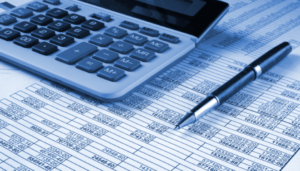Now that your company has transitioned to the ASC 842 Lease Accounting standard, what comes next? What do you do when the lease arrangement changes, or the facts and circumstances change after your initial adoption?
Overview of ASC 842 Adoption Process
It’s important to remember the ASC 842 adoption process doesn’t represent an end goal. Instead, it is a new approach for monitoring and managing the company’s lease agreements. Companies must ensure they have accurate and complete data on all their leases, including the terms, payments, and options. They also should ensure that any changes to lease terms or conditions are accounted for and whether any leases need to be reassessed or remeasured to account for the remaining lease term accurately.
Situations Requiring Reassessment or Remeasurement of Leases
Common situations where a lease requires reassessment or remeasurement include:
- The lease terms and conditions change, such as terms being extended.
- Company leaders reconsider exercising a purchase option.
- The company determines the amount of a lease incentive that was unknown at adoption.
- A lease is terminated before the scheduled end date.
- The leased asset becomes obsolete, damaged, or destroyed.
As part of their review, companies must evaluate how to disclose lease changes to stakeholders such as investors, lenders, and auditors.
Understanding Lease Modifications vs. Reassessments
Lease modifications are often easy for lessees to identify because they require changing their contract with the lessor. In contrast, other events during the lease term can require the lessee to remeasure the lease liability and the associated right-of-use asset.
Reassessments are required when an event does not involve renegotiating the lease terms and conditions, but when facts, assumptions, or other circumstances change. For example, a lessee may change their decision about exercising an option within a lease.
Frequency of Lease Agreement Review
How often companies should review their existing lease agreements depends on the number of leases they have and their complexity. In most instances, companies should review their lease agreements annually to ensure that they continue to comply with ASC 842 and any changes have been identified and accounted for properly. If a company has many leases, or complex leases, they may need to review their agreements more frequently.
Technology Tools Can Help Lease Accounting
If a lease is modified or reassessed, the underlying liability and right-of-use asset must be remeasured to account for the change. In some cases, the changes result in a gain or loss for the company.
Calculating these changes manually can be cumbersome if the finance teams rely on spreadsheets. In addition, having to copy or re-enter data manually can lead to errors and misjudgment.
Software tools such as LeaseCrunch can perform lease reassessments and calculate the journal entries and amortization schedules for the resulting right-of-use asset and lease liability remeasurements. This can help teams avoid errors and misjudgment caused by manual calculations.
LeaseCrunch offers a step-by-step workflow for entering the necessary data for the lease revision. It is flexible enough to manage changes in lease terms, payment streams, purchase options, early terminations, and incentives received.
For more information about our lease accounting services or lease reassessment and remeasurement, contact our team.

















